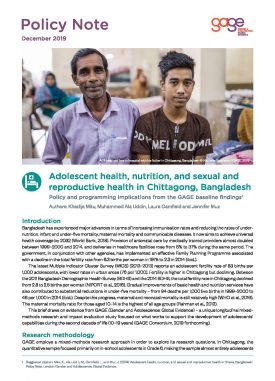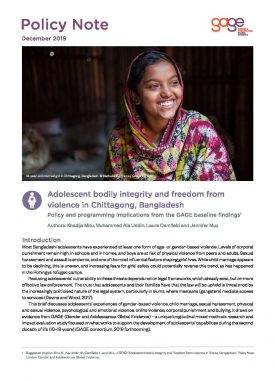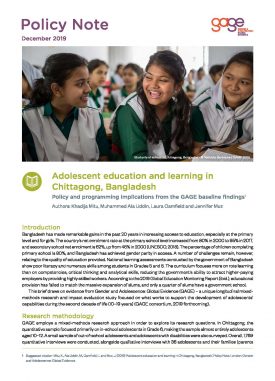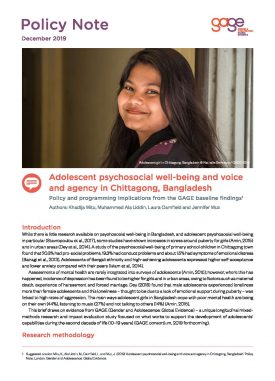According to the Bangladeshi Labour Act 2006, children below the age of 14 years are not allowed to work, and those aged between 14 and 18 years cannot engage in hazardous work. Nonetheless, the most recent Labour Force Survey shows that over 2 million boys and 1.23 million girls are working outside their homes in the country (BBS, 2015). A similar study by the Bangladesh Institute of Development Studies (BIDS), the Bangladesh Bureau of Statistics (BBS) and United Nations Children’s Fund (UNICEF) based on the 2011 Population and Housing Census estimated that about 1 million children aged 10–14 years were working, mostly in the services sector (BIDS et al., 2013). The Child Labour Survey states that Chittagong has the second highest concentration of total children working, at around 0.82 million (405,950 of these are defined as child labourers), and boys make up around 70% of these (BBS and ILO, 2015).
This brief explores the economic aspirations of adolescents in Bangladesh’s Chittagong Division, drawing on evidence from GAGE (Gender and Adolescence: Global Evidence) – a unique longitudinal mixed-methods research and impact evaluation study focused on what works to support the development of adolescents’ capabilities during the second decade of life (10–19 years). We discuss what kinds of skills or training they are obtaining, including numeracy and literacy; whether adolescents have access to resource endowments, savings and credit; and how they access them. We also look at whether any social protection provisioning exists and whether the sort of work they are doing could be classified as ‘decent work’. We pay particular attention to the ways in which gender relations shape adolescent experiences with regard to economic empowerment.
Suggested citation
Mitu, K., Ala Uddin, M., Camfield, L. and Muz, J. (2019) ‘Adolescent economic empowerment in Chittagong, Bangladesh.’ Policy Note. London: Gender and Adolescence: Global Evidence. (https://www.gage.odi.org/publication/adolescent-economic-empowerment-in-chittagong-bangladesh/)



